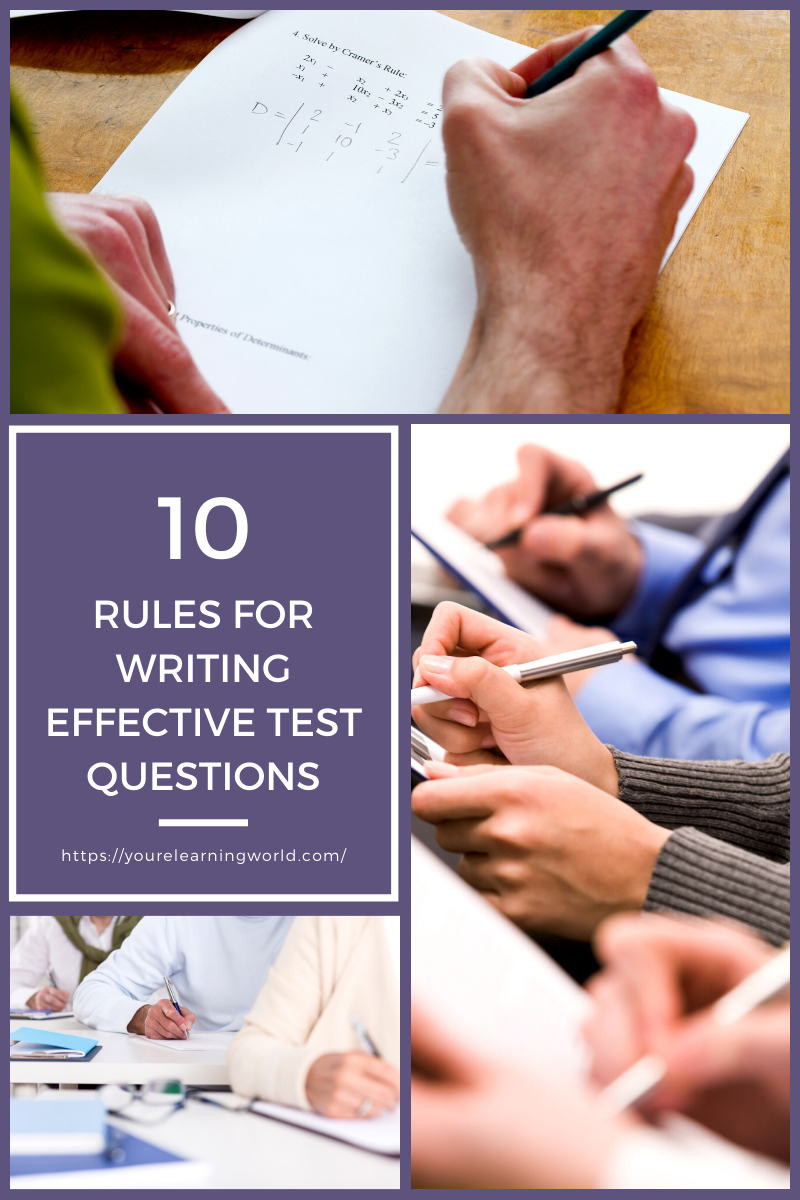As eLearning developers and Instructional Design (ID) professionals, we’re constantly looking for the most effective way to deliver our targeted learning objectives. Well, nothing beats the use of an evidence-supported approach to further deeper knowledge transference, and to assure the application of that learning in the workplace. In this post, we’ll talk about some of the strategies and tactics to promote deeper learning, through practice and feedback. How Deep Learning Works When employees undertake further learning, it is typically to build new skills or enhance proficiency in existing ones. So, how does learning happen? Well, it happens as a process: Employees undergo trainingThey rehearse what they’ve learned during exercises, tests, and assessmentsThey’re often not perfect! Trainers evaluate how they’ve performed, and instruct them on required actions or behavioral changes They incorporate those modifications when applying the newly-learned task/skill in the … [Read more...] about Evidence-based Tactics that Promote Deeper Learning and Application
instructional design
How To Write Better Test Questions to Assess Learning: Evidence-Informed Tactics for Test Questions
Is the fact that a learner completes a prescribed set of training, sufficient evidence that they’ve accomplished what the course set out to teach them? In most instances, the answer to that question is: No, it is not! When designing test questions that demonstrate achieving “real” learning outcomes, L&D professionals must use evidence-informed tactics for question construction. They must also consider the context in which they’re administering the test, what evidence they need from their students to prove that they understood the material and if they can substantively demonstrate that understanding. Use Evidence-based Tactics to Contextualize Your Questions There has been considerable research to understand the impact of question construction and its implication on how learners respond to them. The adaptation of Response Modelling (RM) techniques, and Item Response Theory (IRT) to academia, has produced a vast body of statistical evidence for helping test question preparers … [Read more...] about How To Write Better Test Questions to Assess Learning: Evidence-Informed Tactics for Test Questions
How to Create Stunning eLearning Content in PowerPoint
Creating eLearning courses isn’t rocket science. You can build a professional-looking online course with quizzes, role-play simulations, and interactions right in PowerPoint — even with no tech or design skills. Hard to believe? Then read on and see for yourself. iSpring Suite — A PowerPoint-Based Authoring Toolkit All you need to create a course is iSpring Suite and a good vibe, of course. iSpring Suite is a comprehensive eLearning authoring toolkit that’s integrated with PowerPoint. Once you download and install it on your computer, it will appear as a new tab on the PPT ribbon. On the iSpring toolbar, you can see the entire set of its tools that can be used as easily as any other PowerPoint functionality. Just click on Quiz if you’d like to create a quiz, or choose Screen Recording if you need to make a video of your screen. It’s as intuitive as can be. Create Slide-Based Courses in Minutes Do you have existing PPT slides? Then leverage iSpring Suite to turn them … [Read more...] about How to Create Stunning eLearning Content in PowerPoint
How to Create Learner Engagement Through Micro Content: 10 Tips and strategies worth exploring
Learner engagement is the ultimate test of an L&D professionals’ ability to design, produce and deliver eLearning successfully. However, “success” isn’t just a measure of how many learners enrolled or completed the course but is also a function of the level of commitment and engagement displayed during the course. Unfortunately, traditional course content, like lengthy PowerPoint decks, 10-thousand-word text descriptions, and hours-long audio is no longer conducive to engagement. So, what’s the alternative? Microcontent! What is Micro-Learning Content? As the name suggests, micro-content is learning content that’s smaller in size and scope than its lengthier peer. Typically, traditional eLearning modules run anywhere between 30-minutes and an hour. During that time, it’s hard for L&D professionals to assure they have the learner’s complete attention. The longer a lesson takes to complete, the greater the chances are that learners will disengage. To address that issue, … [Read more...] about How to Create Learner Engagement Through Micro Content: 10 Tips and strategies worth exploring
Ten Rules for Writing Effective Test Questions
As an instructional designer, you’ll frequently have the task of assessing whether your courses have met their instructional objectives. Typically, trainers consider several parameters to judge the outcome of a course – course completion, engagement, interaction with fellow learners, assignment quality and timeliness, etc. However, a learners’ performance on tests is often an important benchmark for determining course effectiveness. How trainers and course designers develop those test questions is, therefore, critical. Testing a Broad Spectrum of Intellectual Accomplishments The key to writing effective test questions is in developing them so they assess a broad spectrum of intellectual understanding of the course content. It is important to test all six levels of that understanding, as espoused by Bloom’s Taxonomy: Knowledge Comprehension Application Analysis Synthesis, and Evaluation …with knowledge being the lowest level of understanding, and evaluation … [Read more...] about Ten Rules for Writing Effective Test Questions
10 Most Common Mistakes Rookie L&D Professionals Make…And How To Avoid Them
Newcomers to any field often have the world in front of them, and newbies to the Learning & Development (L&D) and Instructional Design (ID) profession are no different. The tendency is to put everything they’ve learned to practice, in the hope that they’ll produce more effective eLearning solutions. In the process, they often make some rookie mistakes. How To Avoid Common Errors That Rookie L&D Professionals Make Here are 10 common rookie errors to avoid. 1. Assuming That When The Client Asks For A Learning Solution, It's The Right Solution For Whatever Problem The Client Is Trying To Solve Or Objective They're Trying To Achieve Training won’t always solve an issue. And one of the most important questions novice L&D professionals must learn to ask is: Is training the solution to a problem? An established factory (in business for 30 years) owner might be concerned about falling quality and productivity and increasing safety incidents. Their answer: Train the … [Read more...] about 10 Most Common Mistakes Rookie L&D Professionals Make…And How To Avoid Them






